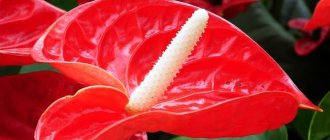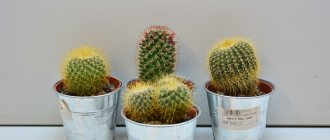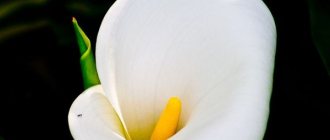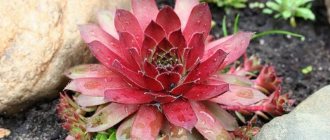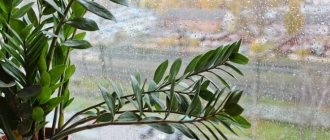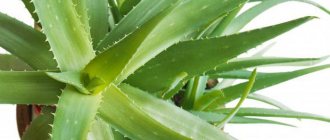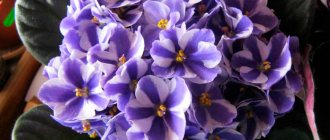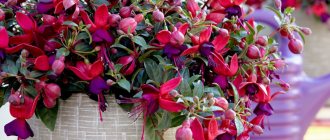Not everyone associates the beautiful and mysterious name “echeveria” with a plant so familiar to many gardeners as the stone rose, sometimes also called the young rose or the tenacious. At the same time, this unpretentious, but very effective succulent often decorates not only flower beds, but also indoor flower beds, harmoniously complementing minimalist interiors.
However, superstitious flower growers do not dare to grow a stone rose in the house, considering it a plant more suitable for a cemetery and, due to this feature, promising the owner various troubles and sorrows. What do folk superstitions “think” about this?
- In ancient times, any plants belonging to the genus Echeveria were considered effective amulets for the home against dark forces. In medieval Europe, there was even a custom of planting succulents on the roof to protect against “heavenly fire”: thunder and lightning.
- There is also a negative belief associated with tenacity. Its ability to withstand long periods of drought and thrive in even the most unsuitable soils made it a particularly suitable plant for planting in a cemetery. That is why some consider the stone rose to be a carrier of negative energy, adversely affecting the home aura.
- It is very useful to plant juveniles in a flowerbed at the entrance to the house or place a pot with this unpretentious succulent in the corridor opposite the front door. This way you can protect your home from visits from ill-wishers and envious people.
- A stone rose would also come in handy in the workplace. After all, it is quite possible to leave it unattended for a short vacation. In addition, an original and neat flower will not take up much space on the table, but will very effectively contribute to your career growth and the successful implementation of the most risky projects.
- Esotericists claim that the stone rose is an energetically neutral plant, and its effect on a particular person depends on his relationship to the flower. If you have a liking for the unassuming succulent and believe it will protect you from dark forces, then it will. A wary glance at a cemetery flower will not add to your troubles, but it will not bring you much happiness either.
- It is not for nothing that Echeveria received the name “rejuvenating” among the people. The numerous healing qualities of this flower are often used in folk medicine today. Medicinal potions based on succulent juice effectively help with fever and epilepsy, problems with the lungs and heart. When used externally, stone rose can help get rid of skin defects and lesions: age spots and freckles, manifestations of skin diseases.
Many people like the stone rose - signs and superstitions associated with echeveria will help you figure out whether it is worth keeping this plant in your home.
Wonderful plant Echeveria
This plant is distributed mainly in America and Mexico, growing on plains or mountain deserts. In the territory of central Russia and the Caucasus there are species of echeveria. Echeveria has received many names among the people: stone rose, hare cabbage, young, tenacious.
Photo of stone rose
The comparison with a rose or cabbage is not accidental, because if you look at the appearance of the plant, you will understand that it resembles both a rosebud and white cabbage.
The plants are used as decoration; often in folk medicine, certain types of juvenilia are used to treat fever, epilepsy and various other diseases. In ancient times, girls believed that it could be used to remove freckles and age spots.
Useful and healing properties
The stone rose flower has a unique chemical composition. It includes:
- mineral compounds of chlorine and iron;
- ascorbic acid;
- polysaccharides;
- amino acids;
- flavonoids.
This determines a number of beneficial properties of the plant:
- antipyretic;
- anti-inflammatory;
- refreshing;
- emollient;
- rejuvenating.
Echeveria has long been used to treat colds, respiratory diseases, fever, diseases of the visual organs, various skin rashes, boils, mental disorders, epilepsy, etc. The juice from the leaves of this plant was used to remove freckles and eliminate pigmentation.
It has also found application in cosmetology for the preparation of healing masks for the face and hair.
Signs about indoor stone rose
In the Ancient Roman Empire, the stone rose was considered endowed with special magical powers. She was credited with the ability to protect against black magic.
In the Middle Ages, interest in “survival” increased even more. This plant began to be planted on roofs. According to legend, this order was given by Charlemagne. He believed that this flower protected from thunder and lightning.
The plant turned out to be really tenacious. It can grow in mountains, crevices, on sand and clay, practically does not need moisture, and can tolerate heat and frost. The young will survive in any weather conditions. That is why the plant, capable of surviving in any situation, protecting from evil spirits, thunder and lightning, has long been considered a protector, a good talisman.
Read also: Is it possible to water orchids with yeast?
Another common superstition is that the stone rose is a cemetery flower, unfavorable, charged with negative energy. Therefore, many people refuse to keep it in their homes. As you can see, this opinion differs from the above. And in cemeteries it is planted only because of its ability to survive without long-term watering.
A similar sign
The stone rose is a unique flower in terms of survival; it grows where other plants would die: in rock crevices, stones, sand. Since ancient times, the flower has been considered a strong talisman against evil forces. Nowadays, Molodilo is used as a spectacular decoration for a home, flower bed, and also for creating long-lasting bouquets, since it lasts for a long time. In addition to its attractive appearance, the flower is famous for its ability to extinguish negative energy.
Contents show
Benefits of the flower
The flower is useful not only for its magical properties. It also cleanses the air of harmful impurities. In addition to outbreaks of human aggression, the plant is also capable of absorbing electromagnetic radiation from a computer, TV, or microwave. This will not harm the plant, and will help the inhabitants of the house feel better.
Haworthia also has bactericidal properties. A cut leaf of the plant will disinfect the wound and help it heal quickly.
Why does it bloom?
Haworthia is grown for its unusual exotic leaves, but it can also please with gray or greenish flowers. It can bloom at any time during the year. And although her flowers are not very beautiful, they promise you success and luck, both at work and in your personal life.
According to popular belief, haworthia blooms only in a house where happiness and harmony reign.
Popular beliefs
Haworthia is considered a protector plant. She is able to absorb negative energy and give out positive energy. This is a flower that can sacrifice itself for the sake of its owners.
Another sign says that if you keep this exotic plant in your home, it will attract useful people to you.
Opinion of psychics and bioenergetics
Psychics and bioenergetics experts agree that, in general, this plant does not attract bad luck and does not harm the owner of the room.
You should not be afraid of the superstition that says that young people have cemetery energy, since there is no confirmation of such an opinion, and it is unlikely that such a terrible attribute would have been used then for so many years as a talisman against evil forces and bad weather.
Of course, it is very important how you feel about this flower. If you are afraid of it, doubt that it is filled with positive energy, will have a good influence on your life, and will not cause damage, then the result will be appropriate.
It does not matter at all in which part of the apartment the stone rose will be located, since the flower has completely neutral energy. Of course, if you love this plant, talk to it, fill it with your positive energy, then it will be able to increase it several times.
In addition, if you believe that the stone rose is your reliable talisman against any adversity and black magic, then it will be so.
As you can see, the stone rose is a neutral plant, and you can have it in your home without fear. Don't be afraid, don't think about the bad superstitions associated with this flower. After all, if you like him and doesn’t cause any negative emotions, then he won’t bring any negativity into your life.
A rare flower does not have its own history, full of legends and superstitions. The stone rose, often used in landscape design, is no exception. How to care for it at home?
Stone rose is an exclusively popular name used in Russia and the CIS countries
Quartblog Digest
Succulents: types of cute fat ones and caring for them - The most complete instructions for caring for succulents at home. We will show examples of plants in the interior.
How to grow Vanilla Frize hydrangea if you don’t know anything about it - Kvartblog tells how to grow Vanilla Frize hydrangea, what is required for care, and shows photo examples of how beautifully this plant blooms.
Know and be able to: how to grow orchids - We will tell you how to grow and care for several types of indoor orchids at home, which are often sold in stores.
Hanging flower pots: DIY and more - Eight tutorials to help you make the perfect hanging flower pot, and eight links to ready-made items.
Artificial flowers in the interior - The skillful art of imitation. Artificial flowers in the interior - beautiful examples, useful tips and important recommendations from Kvartblog!
Botanical description of stone rose (juvenile)
Stone rose is an exclusively popular name used in Russia and the CIS countries. tenacious or hare cabbage, echeveria is also used Translated from Latin as “always alive.”
This unusual succulent consists of many lanceolate, succulent leaves that look like scales. They are located around a straight stem in the form of large or small rosettes (in diameter from 1 to 15 cm in diameter). Star-shaped flowers with a double perianth and many stamens ripen into ovoid fruits from 8 to 20 pieces.
Looking carefully at the plant, you understand why it was named so. Its pattern of leaves resembles a blossoming rose. Often found in the Caucasus and southern North America.
Varieties for indoor growing
Echeveria is distinguished by a variety of varieties, each of which has its own characteristics:
- Agave - bush-like form, red-yellow flowers, height up to 35 cm;
- White-haired - red flowers, the presence of white pubescence on the leaf blades;
- Derenberga - yellow-orange flowers, smooth, gray-green leaves;
- Bristly - orange flowers, dark green leaves with white fluff;
- Humpbacked - height up to 60 cm, flowers yellow inside, light red outside.
Also popular among gardeners are such varieties of echeveria as: cushion-shaped, graceful, metal-flowered, Shaviana, Pearl of Nuremberg.
Find more information about succulent varieties and hybrid varieties here.
Signs and superstitions associated with the stone rose
Echevaria has a rather controversial reputation: some believe that the plant does not carry negative emotions, others are afraid to plant hare cabbage at home or in the garden, because they believe in its negative energy. It must be said that the second superstition arose due to the fact that stone roses are often planted in cemeteries. This choice is not surprising, the plant is practically unpretentious, it thrives on stones, it does not need to be watered often, it survives drought calmly and at the same time looks great. But, like any other living creature, the survivor is capable of absorbing bad emotions (but also positive ones).
And so the plant has had a good reputation since Antiquity. In Ancient Rome, the flower was called a talisman; they believed that it could ward off evil from its owner. This superstition was not forgotten in the later era of the Early Middle Ages: Charlemagne ordered it to be planted on the roofs of houses to “scare off” lightning. So the stone rose became the first “lightning rod”.
There is no need to be afraid of keeping a flower at home because of existing superstitions. In order for him to “cleanse” himself of accumulated negativity, it is enough to simply talk to him often and treat him with love. Then the stone rose will only be a joy; it will become a true decoration for the room.
What is young, its types and varieties, how does it bloom?
Young is a very beautiful perennial plant that does not require special care. It will ideally decorate any yard; it can be used to create an alpine slide. Also, a very exciting creative process of creating interesting compositions from different types and varieties of this miracle flower. It is simply impossible not to fall in love with it; it amazes with its rich appearance, unusual shape and has healing properties.
Juvenile is an evergreen, durable, 20-centimeter plant with a straight stem, fleshy leaves, pointed at the top and covered with a special film that protects against rapid evaporation of moisture. Spiral-shaped leaves grow around the rosette in the form of a cocoon. They fit tightly to each other, forming small balls. Its roots do not penetrate deep into the ground, but are located above.
Rejuvenated
That is why, a very long time ago, this plant was planted on the roofs of houses; it looked very unusual, but at the same time environmentally friendly. Flowers of different shapes, colors and heights.
Since these plants are not whimsical and do not require much effort to grow, there are many species, varieties and even hybrids that amaze with their unusual beauty. The area of their growth is very large: from Asia and Northern Africa and right up to Central Europe.
Juveniles can change their color in sunny weather, with excellent soil that meets all the necessary characteristics for this variety and species, depending on the time of year, as well as as they grow intensively. Each of the existing species differs not only in coloring, speed of leaf growth, plant size and rosette structure, but also in the speed of reproduction, size and shades of flowers, height of peduncles and time of flowering and fading. Let's take a closer look at what types of this wonderful plant exist and delight many people with their beauty:
- Juveniles, which reproduce by shoots , grow mainly near the great lakes , where the soil is sufficiently moist and there is a lot of sunlight . Greenish shoots with red edges form a spiral, holding on to thin stems, which it is advisable to tear off for rooting of young shoots.
- The cobwebby juvenile is distinguished by small processes only two centimeters wide. It received this name because of the many small fibers in the middle, which resemble a spider’s web.
Cobwebby young
- Roofing young is very common all over the world. It was from him that experienced gardeners bred new varieties or crossed existing ones to produce hybrids. It has a large rosette, up to ten centimeters wide. The leaves are massive, their edges have a reddish tint. Flowers can be of different shapes and shades.
Roofing was young
- Mountain varieties of this plant have very large shoots, and the leaves at the base are very rich green; they delight with their beauty all tourists who love to breathe clean air and see the beauty of the area from the mountain heights of the Caucasus. Abundant flowering occurs in July - mid-August.
Mountain rejuvenated
- Russian young grows in the forest-steppe zone, also has green leaves and a rich, bright flower and a long peduncle.
Russian made you look younger
- The spherical juvenile can be found on the slopes of the famous Caucasus Mountains. The width of its rosette is only three centimeters, and the green leaves, shimmering in the sun, give off a slight reddish tint.
Ball-shaped young
- Marble juveniles fascinate with the depth of color and the diameter of the rosettes, which can be up to twelve centimeters. The leaves are soft green, interspersed with red.
Marble was young
- The leaves the sandy young are smooth with red edges; the shoot can be up to fourteen centimeters wide and two centimeters high.
Sandy young
- The inflorescences of the low-growing juvenile contain an average of seven purple flowers with a contrasting line along the entire length of the petals.
The undersized young man
The following varieties of this famous plant are extremely popular:
- "Princess" variety is very suitable for creating floral designs, green balls with a dark brown coating
- It goes well with the Pharaoh , which has deep purple leaves with a green covering.
Variety "Pharaoh"
- Hybrid "Montana" has rich green shoots with a delicate purple coating.
Montana
- But the “Julia” amazes with the width of its marsh-colored rosettes, which begin to turn red by the arrival of the first autumn coolness.
"Julia" in autumn
Each shoot of a stone rose blooms only once, after flowering it dies, and new ones grow from the remaining small children. Adults, established young ones, bloom much faster and manage to grow many children during flowering, but young ones do not.
The young blooms profusely and for a long time throughout the hot summer months, delighting owners and passers-by. Various colors to suit every color and taste.
Planting a stone rose in open ground
Most often, this beautiful flower is used in the design of garden plots.
Read also How peas grow by day
Selection and preparation of a landing site
- The very first rule that you need to adhere to is that the tenacious creature loves the sun’s rays very much, without them it will easily wither and die. Therefore, choose the most open areas, not obscured by bushes and trees.
- For the same reason, the plant does not particularly combine with other flowers. The stone rose is very small, less than 10 cm (8 cm on average), so even the smallest crops can easily cover it.
- Neat, symmetrical echeverias look pretty in almost any container, so this point may not worry gardeners.
- The succulent prefers rocky or sandy soil, where it feels most comfortable. In principle, experts do not prohibit the use of different types (for example, loose and drained), since they are not particularly whimsical.
- As an additive, mix the soil with charcoal, expanded clay or humus.
- For clay soils, it is advisable to use drainage that prevents water from stagnating inside.
In such conditions, the stone rose will take root perfectly.
The tenacious creature loves the sun's rays very much, without them it will easily wither and die
Technology and timing of planting stone roses
- Usually, young shoots are planted in an open place in the summer: June and July. August is already a bit cold; before the frosts, the hare cabbage simply will not have time to take root and the root system will die. But if you provide the plant with special conditions, then planting can be carried out throughout the season.
- Clear the selected area of land. Pull out all the weeds, even the smallest ones. In the future, they will not allow the echveria to develop normally. The exception is the lawn.
- If you are afraid that the succulent may receive an excess of water, arrange drainage: pour a little expanded clay at the bottom of the dug hole.
- The size of the hole should not be too large. Focus on the volume of the roots.
- Gently lift the soil in the pot where the succulent is located with your hands or a spatula. Take out a solid lump, rub it a little with your fingers, but not too much.
- Place the plant in the prepared hole, but not deep. Cover the roots with the remaining soil. Then water the flower.
- If you are replanting more than one seedling, then maintain a certain distance. It should be at least 10 cm, since hare cabbage grows quite strongly in width, some specimens reach 15 cm.
Planting and replanting - how to plant correctly
Selection of container and soil
Usually a stone rose is replanted only when it has already filled the entire space of the pot with rosettes, but this does not happen soon. Therefore, replanting young plants into larger containers is carried out no more often than once every three to four years.
The soil for juveniles should always be crumbly, not clayey or acidic. Juveniles love humus and sand. As a substrate, you can also use a ready-made mixture for cacti, which is sold in the store, but it is better to add crushed charcoal to such soil.
Drainage should be no less than a third of the volume of the pot. This is necessary to protect the plant from excess moisture, and through such drainage it will be removed quickly and easily. Juvenile has a rather modest root system and therefore there is no need to worry that it will not have enough remaining space in the pot.
- The tiny roots of the young are carefully straightened, laid on the ground and covered with earth.
- You need to water the newly planted young immediately, but only a little and strictly at the root.
- If the young is transplanted into new soil, then it should be transferred together with an earthen lump of old soil, and the distance between the rosettes should be maintained at least ten centimeters.
You can plant the plant in open ground at any time, until the very end of September. The main condition for planting is that the plant has time to take root before the onset of frost, otherwise it will not take root and will die.
Photo gallery: choosing a suitable flower pot
Today, stone roses are planted in very original containers. Thanks to its compact root system and preference for light soil, it can be grown even in an old boot.
How to plant young ones in a florarium
A florarium is a glass container with a substrate and plants, where a special microclimate is created that is suitable for the plants. A florarium is a kind of ecosystem, a mini-landscape, an unpretentious plant world on a shelf. Plants in a florarium do not require constant care.
Juvenile is great for creating a small florarium
You can make a similar florarium with a stone rose yourself.
To do this, you need to place a layer of drainage (about a tenth of the volume) in a glass container of the shape you like, mixing small pebbles or expanded clay with crushed coal. Soil for succulents is poured over the drainage and, using tools, for example, tweezers, the young are placed in the container, which is carefully watered using the long spout of a watering can, directly under the root. The resulting voids can be decorated with colored pebbles or even beads.
Pieces of bark or pumice are placed in the florarium to imitate a landscape, and to prevent the soil from mixing with drainage, half a centimeter of sphagnum moss is laid between the layers. Instead of moss, you can use fiberglass.. The soil in the florarium must certainly be poor in nutrients, since the active development of plants here does not make sense
But, if the young look depressed and clearly need feeding, then in this case you can fertilize the florarium with a minimum dose of the substance, no more than half a gram per liter of water or 4 times less than the usual norm
The soil in the florarium must certainly be poor in nutrients, since the active development of plants here does not make sense. But, if the young look depressed and clearly need feeding, then in this case you can fertilize the florarium with a minimum dose of the substance, no more than half a gram per liter of water or 4 times less than the usual norm.
If a closed or remote florarium is created, then the young will not need watering at all. You will have to water it once every 2 months, bringing water to the roots using an enema or syringe. If moisture gets on the leaves, a stone rose will die faster in a closed container than in a pot.
Secrets of caring for a stone rose in the garden
Any garden flowers need to be carefully looked after, only then will they be able to develop properly. And although the survivor is not too whimsical, it is also demanding of certain factors and they should be taken into account.
- The peculiarity of succulents is that they perfectly accumulate water and are able to survive long periods of dry soil without any problems. Therefore, you do not need to water the plant every day, but once or three times a week during particularly hot months. Do not overdo it, otherwise the roots will begin to rot, which almost always leads to death. Keep an eye on the lower leaves, they are the ones who begin to respond to overflow first.
- Carry out the process itself under the plant, the outlet should not be wet.
- Loosening the soil around the crop has the most beneficial effect on it. This helps get rid of weeds, the roots begin to breathe better, and ventilation increases, which prevents moisture accumulation. But keep in mind that the rhizome is almost on the surface, so carry out the process extremely carefully.
- Remove dead plants and weeds in a timely manner.
- What attracts gardeners to the stone rose? It does not need to be fertilized, unlike many other crops. Fertilizing worsens the saturation of the leaves and makes the plant more vulnerable to frost. Only three-year-old flowers need help. Buy a special preparation for succulents and cacti, use only half the volume of the indicated dose.
Light-loving stone roses must be prepared for cold weather. Delicate and delicate flowers will simply die in the first winter. The process itself is not too complicated.
- Prepare shelter. Plastic bottles with a volume of 5 liters are perfect for protection. Cut off the top of them.
- Punch holes with an awl 1 cm from the cut. There shouldn’t be too many of them; five to seven pieces is enough.
- If such a bottle is too large, select another container that is suitable in width. If one container is not enough, then take several pieces.
- Turn the vessel upside down and place it above the flower bed. To prevent it from being blown away by the wind, secure the bottle with metal rivets or pins. That's what the holes are for.
- Carefully cover the one-year-old juveniles with spruce branches, and they will survive their first winter in an open area just fine.
What does echeveria look like?
The genus Echeveria is part of the Crassulaceae family. In total, according to various sources, there are from 150 to 180 species of these succulents in nature. The homeland of most of them is Mexico and the southern states of the USA, but some representatives can also be found in South America (Peru). The plant prefers low mountains and plains, where in summer almost all days are hot and sunny, and in winter, if there are frosts, they are very infrequent and insignificant.
The genus was named in honor of the 19th century Mexican artist Atanasio Echeverría Godoy, who, in addition to his main activity, was interested in botany, compiling and illustrating books dedicated to the flora of his homeland.
The collection of echeverias is guaranteed not to go unnoticed
A characteristic feature is the ability for interspecific crossing. Pachiveria (a hybrid with pachyphytum) and Graptoveria (with graptopetalum) were obtained through selection.
All echeverias are typical succulents. These are evergreen herbaceous or semi-shrub perennials that do not have a stem. It is replaced by a thick, short, fleshy, intensively branching trunk. The main thing that gardeners value Echeveria for is its leaves. They are also fleshy, even, smooth to the touch. A characteristic feature is a layer of whitish, silvery or grayish coating or velvety pubescence to the touch. This is protection from the scorching sun. Moreover, the hotter it is outside, the thicker the layer becomes. Because of this, it turns blue, and a noticeable reddish border appears along the edges of the leaves.
The leaves, arranged often and strictly in a spiral, form dense rosettes. From a distance they can easily be mistaken for flowers. The illusion is supported by an unusual coloring - pale green, with a slight lilac, red, gray tint. Because of this, echeveria has earned its unofficial popular name - “stone rose” or “stone flower”.
In nature, the leaves reach sizes of 3–30 cm in length and 1.5–15 cm in width. At home, the parameters are approximately twice as modest.
The peduncle of echeveria is much taller than the plant itself. Growing from the middle of the rosette, depending on the type, it can reach 35–85 cm. The inflorescence is in the form of a brush, spike or umbrella, with many flowers resembling very small bells. All shades of yellow and orange predominate, sometimes with a greenish or reddish tint. The outside color is a little brighter than the inside. In nature, echeveria blooms in late spring or summer, with the exception of a few species that prefer to do so in mid-winter. Flowering is quite long - 15–20 days. If natural or artificial pollination has occurred, fruit-boxes with five nests are formed, in which small, dull brown seeds ripen.
Echeveria flowers are quite pretty
The roots of the plant are located almost on the surface - this makes it easier and faster to absorb moisture. The root system is fibrous and branched.
Differences from young
Due to its external similarity, Echeveria is often confused with another plant belonging to the Crassulaceae family - sempervivum (popularly known as tenacious or young). However, unlike it, echeverias have an extremely negative attitude towards any cold weather.
Sempervivum leaves look thinner, more graceful, sometimes they may even seem translucent, and the rosettes are smaller in size. Even adult specimens of juveniles do not form stems. The sockets seem to lie on the ground. Echeveria, especially with a lack of light and heat, is capable of stretching. The lower leaves fall off and the rosette rises up.
To leave no doubt at all, you need to wait for the offspring to appear. In echeveria, “babies” develop only at the base of the stem. For this purpose, the young produce “whiskers”, at the ends of which offspring are formed.
Echeveria and Juvenile belong to the same family and are quite similar, but there are several distinctive features
Methods for propagating stone roses
Most people are afraid to purchase several specimens at once, but then they realize the value and beauty of these plants and think about buying a few more succulents. But the tenacious creature reproduces easily, so you don’t have to resort to store services and try to get new stone roses yourself.
Read also: Squash stew in a slow cooker
There are several methods of propagation: seeds, cuttings or leaves.
Vegetative (cuttings or leaves)
- Choose the healthiest and most beautiful succulent in your flower bed. Separate from it the leaf located closer to the trunk. He shouldn't be too young.
- Or cut off the top of the bush, tearing off the lowest leaves.
- Dry the workpieces for several hours.
- At this time, mix vermiculite and sand in equal proportions. Moisturize it.
- Stick the cutting or leaf into the prepared soil and place it in a well-ventilated and sunny place.
- So the plant should stand for a month. Moisten the soil periodically.
- During these 30 days, in good conditions, an outlet should appear. It will take 2 to 3 months for its final formation. The maternal part will dry out at this time.
- Transplant the new organism into a separate pot with cactus soil.
Seeds
- For this method you will need peat and sand. Place their mixture in a suitable box.
- Stick the seeds shallowly into the ground (4-5 mm). Spray the soil with a spray bottle. Cover everything with film.
- The container is left in a warm (20-25 degrees) and lighted room.
- Moisten the soil as needed.
- After two weeks, the succulents will appear above the ground, and the young ones are transplanted when 2-3 well-developed leaves are formed.
Why does it bloom?
The stone rose blooms only once a year , and knowledgeable people associate its flowering with future changes in life. They can be of different kinds - both positive and negative, but they cannot be avoided. In this case, much depends on the energy of the owner of the flower and on his attitude towards life.
But if a succulent sprouts shoots, this predicts favorable events in the house, which relate to profitable acquisitions or winnings.
Options for using stone roses in landscape design
Succulents can pleasantly diversify the look of a garden, adding zest and some warmth to it. The uniqueness of the plant lies in the fact that it is very beautiful, but at the same time it has a green or burgundy tint that is pleasant to the eye. It’s hard to overdo them, so they can be used in absolutely any volume.
- As already mentioned, echveria does not combine well with other flowers due to the fact that it does not receive enough light. Therefore, you need to carefully select other crops. It’s better to do without them, the stone rose is already quite original.
- The combination of pebbles (decorative stones) and hare cabbage is the most impressive. Tender and succulent succulents look very beautiful together with neutral and harsh gray-brown tones. Therefore, if you doubt your abilities as a decorator, choose young ones. It requires very little effort and material, and the result will be wonderful.
- Stone roses look great in individual pots. There is absolutely no need to buy new ones! Broken or outdated containers will do, as long as they are well cleaned. For beauty, you can paint “patches” in especially worn places. Place it on the ground side up and let your imagination run wild! Gardeners even use old shoes, and succulents look great in them.
Stone rose goes well in any composition. They can be used with anything (as long as they follow the prescribed rules).
What are the differences and differences from young people?
You can distinguish echeveria from the young flower by several signs:
- The juveniles have a complete absence of stems, which is why the rosette is located directly on the soil. Echeveria has a more pronounced stem that can stretch when there is a lack of sunlight.
- The young leaves are denser, flatter, and sharper at the edges. The tips of the green leaf blades are painted red.
- Juvenile flowers are formed on a peduncle covered with a large number of leaves.
- Juvenile is frost-resistant, which allows it to be grown in open ground. Echeveria is a heat-loving houseplant.
- In juveniles, babies are formed on the tendrils, in echeveria - in the lower part of the stem.
Color difference in the photo:
Rejuvenated
Echeveria
Features of growing stone roses at home
Juveniles are also excellent for home growing. It should be remembered that in indoor conditions the flower takes root very well, but after that it can no longer be transplanted to an open area, as it simply will not take root.
In principle, the rules of care do not really change:
- Choose exclusively southern sides so that the survivor can receive enough sunlight every day. Even on western and eastern windows there will be a shortage, and on northern windows the succulent will completely wither.
- If you want his plant, but you don’t have enough sun at home, then build a source of additional lighting.
- Juveniles need to be watered very rarely. Just two or three times in the winter months and once a week in the summer is enough.
- Don't think there isn't enough moisture. It is more dangerous to overwater a flower than to underwater it, since it tolerates drought very well and rarely dies from lack of water.
- Use a mixture of sand, peat or leaf soil as soil. Loosen it carefully from time to time.
Since stone roses are practically not susceptible to pests and diseases, they will appeal to lovers of indoor plants. Weeds and cockchafers do not threaten them, the main thing is not to overwater them so that the root system does not rot.
Agricultural technology
Important! Stone rose is a very unpretentious flower, so even a novice gardener can take care of it. The succulent blooms well both at home and in the garden, at the dacha
Landing
In open ground, stone rose can be planted in the most inaccessible places. It will feel good in the space between stones, wide flowerpots, any pots and containers. The unpretentiousness of the flower is explained by its high resistance to any conditions: drought and severe frost.
To get a rich shade of leaves, it is better to choose a well-lit place to plant a stone rose. In the shade it will look pale. When growing at home, the pot should be kept on a southern windowsill and provided with additional lighting.
Suitable soil for a flower is light, sandy. Drainage in the form of pebbles, expanded clay, and small crushed stone is required. Juveniles tolerate an acidic environment less well, so you should not add fertilizers. At home, a mixture of sand and peat, mixed in a 3:1 ratio, with the obligatory addition of drainage, is suitable.
Important! Flower seedlings are planted in the spring-summer season, in previously loosened soil, cleared of weeds, diluted with sand and pebbles. The holes are made at a distance of 20 cm from each other. Leave 5 to 7 cm of space between dwarf flower varieties.
The seedlings, together with a lump of earth, are placed at a shallow depth, sprinkled with soil, compacted and watered.
Leave 5 to 7 cm of space between dwarf flower varieties. The seedlings, together with a lump of earth, are placed at a shallow depth, sprinkled with soil, compacted and watered.
The stony rose is planted mainly as seedlings, since many daughter rosettes form around it. No wonder the French gave her another name - “mother hen with chicks.” When growing indoors, the “daughters” of the stone rose are separated in September and placed in separate containers.
Note! When propagated by seeds, flower growth slows down. Sowing of seeds occurs at the beginning of March. A week later, seedlings appear and are transplanted to a permanent place in the first days of July.
A week later, seedlings appear and are transplanted to a permanent place in the first days of July.
Sowing of seeds occurs at the beginning of March. A week later, seedlings appear and are transplanted to a permanent place in the first days of July.
Despite the unpretentiousness of the stone rose, it is still worth paying attention to proper agricultural technology:
- Watering the flower should be rare, once a week in summer, and as needed in winter. Overmoistening of the soil, moisture getting inside the rosettes - all this causes rotting of the roots and leaves of the rose. You need to water at the root.
- Weeding should be regular and careful so as not to damage young rosettes.
- The flower does not need fertilizing. Only after 3-4 years can you use mixtures to feed cacti, and it is recommended to add crushed charcoal. You can use humus.
- There is no need to spray or wipe the leaves of the flower, as they have their own protection in the form of a film. Drops of moisture under the sun can cause burns.
- After flowering, it is recommended to remove the dried inflorescence to allow the flower to regain its strength for the new season.
Important! It is recommended not to replant the stone rose, but to plant it. To prevent numerous daughter rosettes from becoming smaller, they are seated in another place. Stone rose tolerates frost well under snow cover
To do this, it dries out in the fall, getting rid of excess moisture in the leaves. But recently planted, fragile flowers should be covered with foliage or branches of coniferous trees
Stone rose tolerates frost well under snow cover. To do this, it dries out in the fall, getting rid of excess moisture in the leaves. But recently planted, fragile flowers should be covered with foliage or branches of coniferous trees.
Reproduction of Echeveria Elegans
The plant can be propagated in any of four ways:
- leaves,
- Stem cuttings,
- Seeds,
- Children.
How to propagate by leaves
Carefully remove a few healthy leaves from your plant. Set them aside for a few days to allow the wounds to heal. Place the cuttings in a new pot on the surface of a well-drained soil mixture of regular soil and perlite (50/50). Maintain the same watering regimen that you used for the mother plant, and roots should begin to grow from the separated leaves within 1 to 2 weeks.
Stem cuttings
Similar to propagation by leaves, you can take stem cuttings and plant them in a new pot with the properties described above. Also, be sure to follow the watering and easy care guidelines suggested in the previous sections.
If all goes well, rooting can occur within 2 or 3 weeks after planting the cutting. After the roots have established themselves in the soil, the rosette has grown and the “mother leaf” has dried out, the new plant can be replanted.
Seeds
You can plant Echeveria Elegans seeds in a 10cm diameter pot. Be sure to use a combination of fertile soil mixed with equal parts perlite. After you cover the seeds with a thin layer of soil, be sure to water them evenly. Keep the pot in partial shade. Expect the seeds to germinate in a maximum of 3 weeks.
You can learn more about propagating succulent plants from our article - Methods for propagating succulents.
Reproduction by children
This method is the simplest. It is necessary to separate the baby from the mother plant, leave it alone for a couple of days and transplant it into a new pot.
The composition of the soil mixture is described above. You should start watering a new plant after a week.
Seed method of obtaining new young
Reproduction is possible using seeds. The disadvantage of this method is that there is no guarantee that it will grow the same plant as the mother plant. Sempervivums obtained by seed are often of the same type, green in color, and lose their varietal characteristics.
The process of obtaining young from seeds is long, but uncomplicated. Sowing is carried out in winter, spring, and summer directly in the garden bed or in small containers. It’s easier to grow at home, since you don’t need to fight weeds and it’s more convenient to monitor watering.
Sow seeds to a depth of 1 mm. In order for them to germinate, they need to be constantly moistened and the temperature maintained at +20 degrees. The young have small seedlings, so you should be more careful when weeding. It is necessary to water carefully so that the stream of water does not wash the germinating seeds and small seedlings from the soil.
Shoots appear after 3-5 days.
You have to tinker with seedlings a lot. In the first year, the rosettes are very small. In the second, they grow larger and give birth to children. Only in the third year does the young become a full-fledged flower.
Diseases and pests of Echeveria graceica
The plant is generally disease resistant except when overwatered, which can result in root rot. To avoid this, allow the soil to dry thoroughly between waterings.
Pests such as mealybugs, weevils or aphids may attack your flower. To get rid of them, use a cotton swab soaked in water or alcohol to remove the parasites. Another option is to wash them off by spraying the leaves. However, be sure to use a soft cloth to remove excess water from the leaves.
Do not forget to promptly remove dried and fallen leaves from the pot, which over time can become a source of disease and shelter for pests.
Popular varieties of Echeveria gracefu
This succulent has been grown in gardens and greenhouses around the world for over a century. The first specimens grown from their natural habitat were registered in 1905 at the New York Botanical Garden. Since that time, flower growers have developed many varieties. Let's look at some of the most beautiful and common varieties.
Echeveria albicans
One of the varieties of Echeveria elegans. A special feature of the succulent is its silver-white leaves with a slight green tint.
Photo by Echeveria albicans (flickr.com)
Plant height is up to 8 cm. The flowers are pink with greenish or yellowish tips.
Echeveria elegans 'Blue'
This variety was bred to highlight its innate blue hue. While natural varieties mix green and blue pigments, this variety has predominantly blue pigments.
This is a beautiful variety and will look great in many color combinations.
Echeveria elegans 'Grey Red'
As the name suggests, plants of this variety come in two colors. The leaves are generally more spaced than the mother species, have large rosettes and a very elegant shape with thinner and more concave leaves, but may actually have a slightly different color.
Some specimens are actually green with pinkish-red tips, while others may be blue with pink tips.
Echeveria elegans 'Gesneden'
A variety with a more pronounced bluish-green leaf color, much more similar to the mother plant.
This variety is rich in leaves, as the rosette is formed by many evenly spaced leaves, which give the succulent a very beautiful shape.
Echeveria elegans 'Raspberry Ice'
This variety has leaves of two colors; the central leaves will be green or bluish and the outer leaves will be orange-pink. It also has a special foliage surface texture that resembles the surface of ice as it is very smooth and reflective.
This variety's rosettes tend to remain closed rather than open wide like other varieties, so the leaves look like candy canes clustered together.

